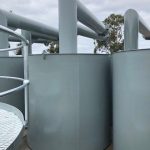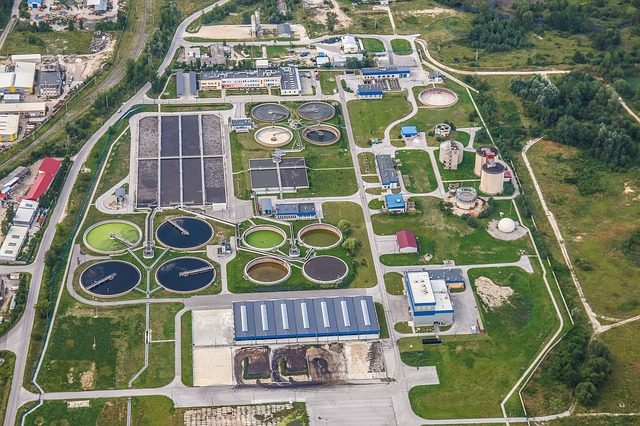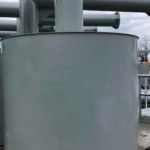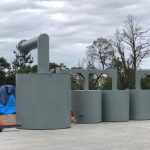
Municipal Waste Centres
Municipal Wastewater Treatment Systems

Collection of Wastewater
- Collection of domestic wastewater is best achieved by a full sewage water drain age system. Unfortunately this method is most expensive and there is relatively few communities in hot climate which afford it. A modern hygienic method of night soil collection is the only realistic alternative.
Treatment of Wastewater
- Treatment is required principally to destroy pathogenic agents in sewage or night soil and to encore that it is suitable for whatever re-use process is secreted for it.
Re-use of wastewater (Recycling of wastewater)
- The responsible re-use of night soil and sewage effluent is aqua culture and crop irrigation can make a significant contribution to a community food supply and hence it’s general social development.
Performance criteria for Wastewater Treatment Management System
The ideal system would satisfy all of the following criteria.
- Health criteria
- Water Recycling criteria
- Ecological criteria
- Nuisance criteria
- Cultural criteria
- Operational criteria
- Cost criteria
Health Criteria:
Pathogenic organisms should not be spread either by direct contact with right soil or sewage or indirectly via soil, water or food. The treatment chosen should achieve a high degree of pathogen destruction.
Water Recycling criteria:
The treatment process should yield a safe product for re-use, preferably in aquaculture and agriculture.
Ecological criteria:
In those cases land the should be considered exception when the waste cannot be re-use, the discharge of effluent into a surface water should not exceed the self-purification capacity of the recipient water.
Nuisance criteria:
The degree of odor release must be below the nuisance threshold. No part of the system should become aesthetically offensive.
Cultural Criteria.
The methods chosen for waste collection, treatment and re-use should be compatible with local habits and social practices,
Operational Criteria:
The skills required for the routine operation and maintenance of the system components must be available locally or are such that they can be acquired with only minimum training.
Cost criteria:
Capital and running costs must not exceed the community’s ability to pay. The financial return from re-use schemes is an important factor is an important factor in this regard. However, no one system completely satisfies all these demands. The problem becomes one of minimizing disadvantages.
Municipal Wastewater Treatment Systems
Municipal wastewater is primarily organic in content and a significant number of industries including chemical pharmaceutical and food have high organic waste load. This means that the main treatment processes are geared towards organic removal. In a typical treatment plant, the wastewater is directed through a series of physical, chemical and biological processes each with specific waste load reduction task. The tasks are typically.
- Pre-treatment ==> Physical and / or chemical
- Primary treatment ==>Physical
- Secondary treatment ==>Biological
- Advanced treatment ==> Physical and / or chemical and / or biological.
Conventional Wastewater Treatment Plant Processes
Municipal wastewater is primarily organic in content and a significant number of industries including chemical pharmaceutical and food have high organic waste load. This means that the main treatment processes are geared towards organic removal. In a typical treatment plant, the wastewater is directed through a series of physical, chemical and biological processes each with specific waste load reduction task. The tasks are typically.
- Preliminary treatment (influent flow measurement, screening (Bar racks), Shredders, comminutors (maceratours), pumping, grit removal)
- Preliminary treatment (sedimentation)
- Secondary treatment(biofitration or activated sludge)
- Sludge treatment (anaerobic digestion of the sludge produced in primary and biological treatment)

Recent Posts



How do Wastewater Aerators Work?
If you’re wondering how wastewater aerators work, you’re not alone. Many people don’t know much about aerators or the role they play

